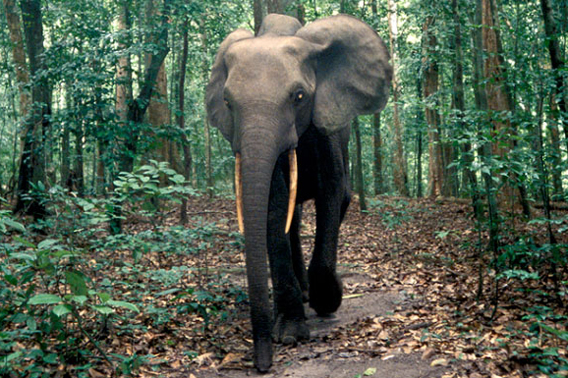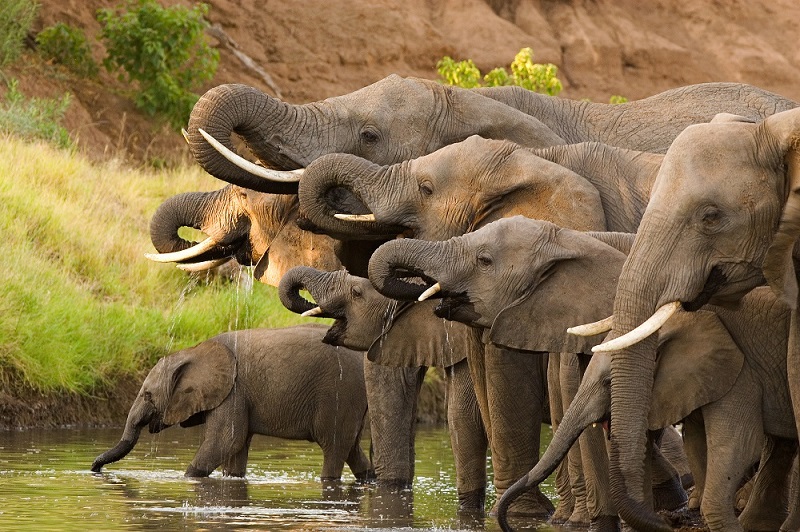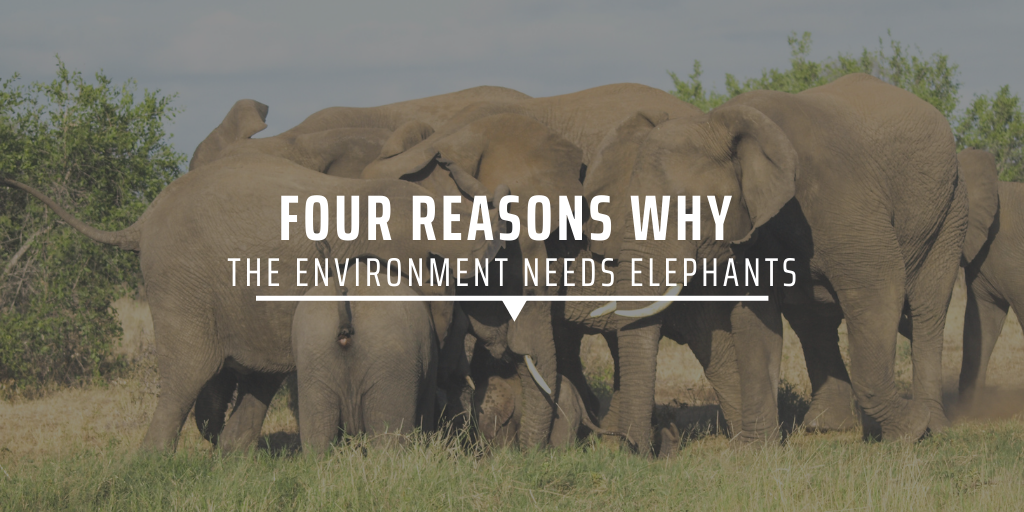Interactions of elephants with the surrounding ecosystem
Home » Query » Interactions of elephants with the surrounding ecosystemYour Interactions of elephants with the surrounding ecosystem images are ready. Interactions of elephants with the surrounding ecosystem are a topic that is being searched for and liked by netizens now. You can Find and Download the Interactions of elephants with the surrounding ecosystem files here. Get all royalty-free photos.
If you’re searching for interactions of elephants with the surrounding ecosystem pictures information related to the interactions of elephants with the surrounding ecosystem topic, you have pay a visit to the right blog. Our site always gives you hints for seeking the highest quality video and picture content, please kindly surf and locate more enlightening video articles and graphics that fit your interests.
Interactions Of Elephants With The Surrounding Ecosystem. Elephants shape their environment in many ways. Which best describes possible interactions of elephants with the surrounding ecosystem. They clear large amounts of vegetation which removes habitats for some organisms but makes the area inviting for other organisms. Without elephants many other species would suffer as they are a vital link in the ecosystem and play a profound role.
 Elephant Artwork Elephant Bull Painting Nature Art By Linda Lemon Bull Elephant African Animals Elephant Photography From pinterest.com
Elephant Artwork Elephant Bull Painting Nature Art By Linda Lemon Bull Elephant African Animals Elephant Photography From pinterest.com
This has led to the disruption of the migratory corridor 42 and the shrinking of habitat for species with large home ranges such as African elephants thus resulting in human-wildlife conflicts. Without elephants many other species would suffer as they are a vital link in the ecosystem and play a profound role. A Princeton University doctoral candidate who has been studying. What impact do the elephants have on their habitat and neighboring human communitiesThe answers to these questions hold a key to the African elephants long-term survival–and researcher Charles Foley hopes to find them. Given below are 3 basic types of human-environment interaction. A keystone species is a species that has a large affect on its environment relative to its abundance.
Elephants shape their environment in many ways.
Help in creating pathways in forests and also help identify salt licks. Without the forest elephant there would be a great decrease in the diversity of trees. The Asian elephant is found in the hot humid and grassy areas surrounding jungles. What impact do the elephants have on their habitat and neighboring human communitiesThe answers to these questions hold a key to the African elephants long-term survival–and researcher Charles Foley hopes to find them. The negative impacts of elephants are associated with increasing settlement and farming activities close to. When elephants are poached to the degree that they have been throughout history it compromises their own population as well as the surrounding ecosystem including the lives of.
 Source: fi.pinterest.com
Source: fi.pinterest.com
The African elephants current conservation status is vulnerable. The African elephants current conservation status is vulnerable. This has led to the disruption of the migratory corridor 42 and the shrinking of habitat for species with large home ranges such as African elephants thus resulting in human-wildlife conflicts. The population would remain almost the same. Given below are 3 basic types of human-environment interaction.
 Source: news.mongabay.com
Source: news.mongabay.com
They can change a forest to a grassy field or dig a hole that might become a pond. Elephant poaching has immense effects on the ecosystem and the environment as a whole. They clear large amounts of vegetation which removes habitats for some organisms but makes the area inviting for other organisms. Elephants shape their environment in many ways. Mace et al Reference Mace Barrett Burgess Cornell Freeman Grooten and Purvis 2018.
 Source: pinterest.com
Source: pinterest.com
The Asian elephant is found in the hot humid and grassy areas surrounding jungles. The interaction of elephants with their surrounding environment is both positive and negative based on the impacts created by their set of action. This has led to the disruption of the migratory corridor 42 and the shrinking of habitat for species with large home ranges such as African elephants thus resulting in human-wildlife conflicts. But changing land-use patterns urbanization habitat degradation and fragmentation to meet the growing needs of the population has led to increasing number of negative interactions between people and the mega herbivore. They clear large amounts of vegetation which removes habitats for some organisms but makes the area inviting for other organisms.
 Source: davidshepherd.org
Source: davidshepherd.org
These fields have grass trees and shrubs on which the elephants prefer to feed. Elephants also create water holes used by other wildlife as they dig dry riverbeds when rainfall is low. Elephants shape their environment in many ways. The population would decrease. These fields have grass trees and shrubs on which the elephants prefer to feed.
 Source: hu.pinterest.com
Source: hu.pinterest.com
They maintain trails and open access to water for other species. Elephants play a crucial role in our environment. Elephants shape their environment in many ways. They clear large amounts of vegetation which removes habitats for some organisms but makes the area inviting for other organisms. The population would be reduced the next year.
 Source: africanews.com
Source: africanews.com
However the diminishing in the number of these elephants would have more of a broader effect. An African elephant is dominant in its environment and provides a serious impact on the ecology by removing trees trampling grasses creating watering holes and improving soil condition. Elephant manure for example helps fertilize soil that helps plant crops and elephants play large parts in seed dispersal as well. Mace et al Reference Mace Barrett Burgess Cornell Freeman Grooten and Purvis 2018. The population would increase.
 Source: biologydictionary.net
Source: biologydictionary.net
Elephant manure for example helps fertilize soil that helps plant crops and elephants play large parts in seed dispersal as well. Help in creating pathways in forests and also help identify salt licks. The ecosystem is diverse with biotic and abiotic factors that influence the ecosystem such as hydrothermal vents lakes rivers and iconic wildlife like elk who have a well-studied annual migration wolves bison foxes and many more. They are making the ecosystem more available and more accessible to themselves in the sense that it increases their own likelihood of obtaining food and thriving in a certain ecosystem. Given below are 3 basic types of human-environment interaction.
 Source: news.mongabay.com
Source: news.mongabay.com
Which best describes possible interactions of elephants with the surrounding ecosystem. When elephants are poached to the degree that they have been throughout history it compromises their own population as well as the surrounding ecosystem including the lives of. African elephants are known as a keystone species which National Geographic explains are those species that have a disproportionately large effect on the communities in which they occur. These fields have grass trees and shrubs on which the elephants prefer to feed. Elephants shape their environment in many ways.
 Source: pinterest.com
Source: pinterest.com
A Princeton University doctoral candidate who has been studying. The population would increase. However the diminishing in the number of these elephants would have more of a broader effect. They trample forests and dense grasslands making room for smaller species to co-exist. Help in creating pathways in forests and also help identify salt licks.
 Source: ar.pinterest.com
Source: ar.pinterest.com
Which best describes possible interactions of elephants with the surrounding ecosystem. Humans try to modify the environment positively or negatively such as cutting forests building dams and extending urban areas. Elephants are keystone species and are like the gardeners engineers and architects of many ecosystems. Elephants shape their environment in many ways. An African elephant is dominant in its environment and provides a serious impact on the ecology by removing trees trampling grasses creating watering holes and improving soil condition.
 Source: nikela.org
Source: nikela.org
Elephants are often referred to as ecosystem engineers because of the level of influence they can have on the functioning of most components of their ecosystem from vegetation dynamics to habitat structure and structure and dynamics of herbivore communities. Loxodonta cyclotis the African forest elephant is considered a necessary part of the ecosystem that is the forests of Africa the keystone Blake et al 2009. Given below are 3 basic types of human-environment interaction. Just like the African elephant Sumatran elephants function in the role of the ecosystem engineer and as a keystone species. Without elephants many other species would suffer as they are a vital link in the ecosystem and play a profound role.
 Source: pinterest.com
Source: pinterest.com
For example The impacts of elephant are positive when it dig a hole which ultimately turns into a pond or when clearing large vegetation invites new organisms into the existing habitat. Loxodonta cyclotis the African forest elephant is considered a necessary part of the ecosystem that is the forests of Africa the keystone Blake et al 2009. A Princeton University doctoral candidate who has been studying. Humans try to modify the environment positively or negatively such as cutting forests building dams and extending urban areas. Given below are 3 basic types of human-environment interaction.
 Source: tr.pinterest.com
Source: tr.pinterest.com
Elephants play a crucial role in our environment. The amount of rainfall determines the grassy area where the elephants will live. For example The impacts of elephant are positive when it dig a hole which ultimately turns into a pond or when clearing large vegetation invites new organisms into the existing habitat. They can change a forest to a grassy field or dig a hole that might become a pond. They trample forests and dense grasslands making room for smaller species to co-exist.
 Source: nationalgeographic.com
Source: nationalgeographic.com
Elephants shape their environment in many ways. But changing land-use patterns urbanization habitat degradation and fragmentation to meet the growing needs of the population has led to increasing number of negative interactions between people and the mega herbivore. What impact do the elephants have on their habitat and neighboring human communitiesThe answers to these questions hold a key to the African elephants long-term survival–and researcher Charles Foley hopes to find them. They can change a forest to a grassy field or dig a hole that might become a pond. In fact most animals stay out of the way of the elephants.
 Source: pinterest.com
Source: pinterest.com
They provide numerous ecosystem services which include providing food shelter water. When elephants are poached to the degree that they have been throughout history it compromises their own population as well as the surrounding ecosystem including the lives of. Human-environment interactions are of different types. The key concerns of the decline of African elephant populations are habitat loss and poaching. They can change a forest to a grassy field or dig a hole that might become a pond.
 Source: gviusa.com
Source: gviusa.com
The population would decrease. Elephants shape their environment in many ways. Elephant poaching has immense effects on the ecosystem and the environment as a whole. In fact most animals stay out of the way of the elephants. Humanelephant interaction is a major challenge facing the management of protected areas in both Africa and Asia Sarker Reference Sarker Gereta and Røskaft 2010.
 Source: pinterest.com
Source: pinterest.com
Help in creating pathways in forests and also help identify salt licks. The significance of elephant in our culture has allowed the coexistence of two species for a long time. A keystone species is a species that has a large affect on its environment relative to its abundance. People use these interactions as a way to adapt to the environment as well as modify it. Just like the African elephant Sumatran elephants function in the role of the ecosystem engineer and as a keystone species.
 Source: pinterest.com
Source: pinterest.com
Elephant manure for example helps fertilize soil that helps plant crops and elephants play large parts in seed dispersal as well. What impact do the elephants have on their habitat and neighboring human communitiesThe answers to these questions hold a key to the African elephants long-term survival–and researcher Charles Foley hopes to find them. An African elephant is dominant in its environment and provides a serious impact on the ecology by removing trees trampling grasses creating watering holes and improving soil condition. The population would be reduced the next year. Elephants are keystone species and are like the gardeners engineers and architects of many ecosystems.
This site is an open community for users to do submittion their favorite wallpapers on the internet, all images or pictures in this website are for personal wallpaper use only, it is stricly prohibited to use this wallpaper for commercial purposes, if you are the author and find this image is shared without your permission, please kindly raise a DMCA report to Us.
If you find this site adventageous, please support us by sharing this posts to your own social media accounts like Facebook, Instagram and so on or you can also bookmark this blog page with the title interactions of elephants with the surrounding ecosystem by using Ctrl + D for devices a laptop with a Windows operating system or Command + D for laptops with an Apple operating system. If you use a smartphone, you can also use the drawer menu of the browser you are using. Whether it’s a Windows, Mac, iOS or Android operating system, you will still be able to bookmark this website.